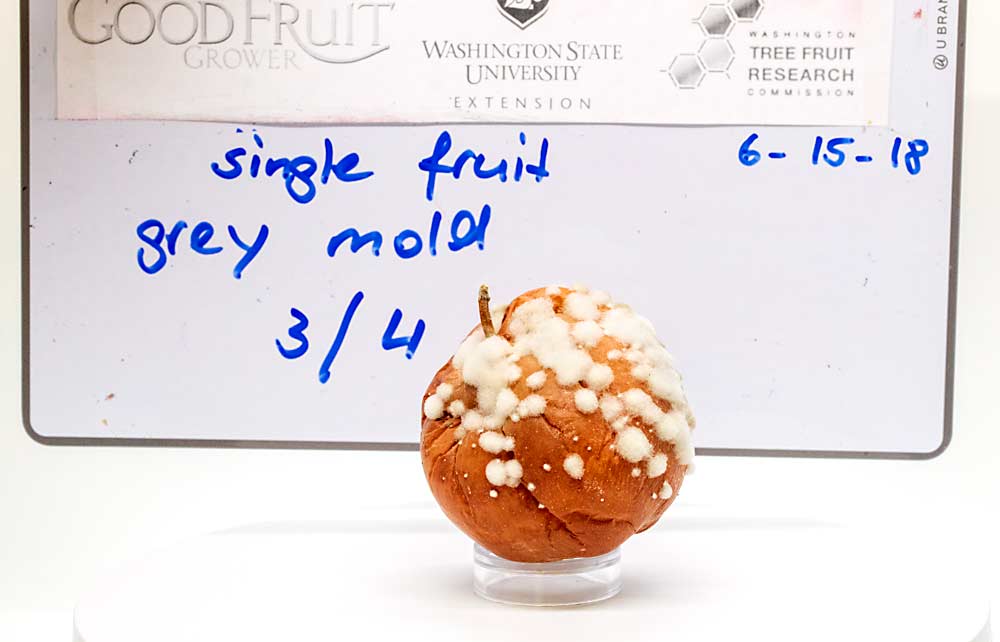
For years, Washington growers and packers have turned to a handy, 36-page guide to determine the exact cause of the flaws in their apples.
Alas, the Quick Identification Guide to Apple Postharvest Defects and Disorders is long out of print — and as noted by Rob Blakey, former Washington State University postharvest extension specialist now with Stemilt Growers, out of date.
So, WSU Extension, the Washington Tree Fruit Research Commission and Good Fruit Grower have teamed up to create a guide made for today, with online images and a user-friendly interface. (For a preview, visit bit.ly/bluemold)
The guide, scheduled to be released in 2019, captures physiology, entomology, physical defects and pathology, Blakey said, or essentially “everything that can go wrong with an apple.”
So far, about 169 defect and variety combos have been produced for the online guide that will include detailed descriptions, photographs with gradations, rotating images and useful links, all hosted on the WSU tree fruit website. Posters and a hard-copy, waterproof guide with similar content are planned.
“Our goal was to have the most comprehensive defect guide with the best photos and the best user-interface that’s easily updatable,” said Ines Hanrahan, WTFRC executive director. “We usually show internal and external images of the symptoms and, with this, you can look at these issues from every angle.”
Good Fruit Grower is especially proud to partner on a project such as this because it meets the magazine’s core mission: to educate growers. As a bonus, it also presents an opportunity to showcase the talents of TJ Mullinax, the magazine’s photographer, videographer, web guru, IT specialist, occasional mechanic …
One could go on about TJ’s many skills, but I’ll stick to this: Over the course of several months last year, he shot more than 14,000 files of degrading and, frankly, in some cases truly disgusting fruit, all of which was brought to the Good Fruit Grower offices. (Thanks for that, guys!)
You read that right — 14,000-plus files. And he loved every minute of it.
It’s been a tremendous effort by everyone involved, and we’re thrilled to have been asked to participate. Stay tuned this year for updates on when the website is live online and printed materials are available for purchase. •

—by Shannon Dininny






Thanks Shannon
It was a monumental effort to get the photos for this project!
Looking forward to launching the defect guide in 2019…